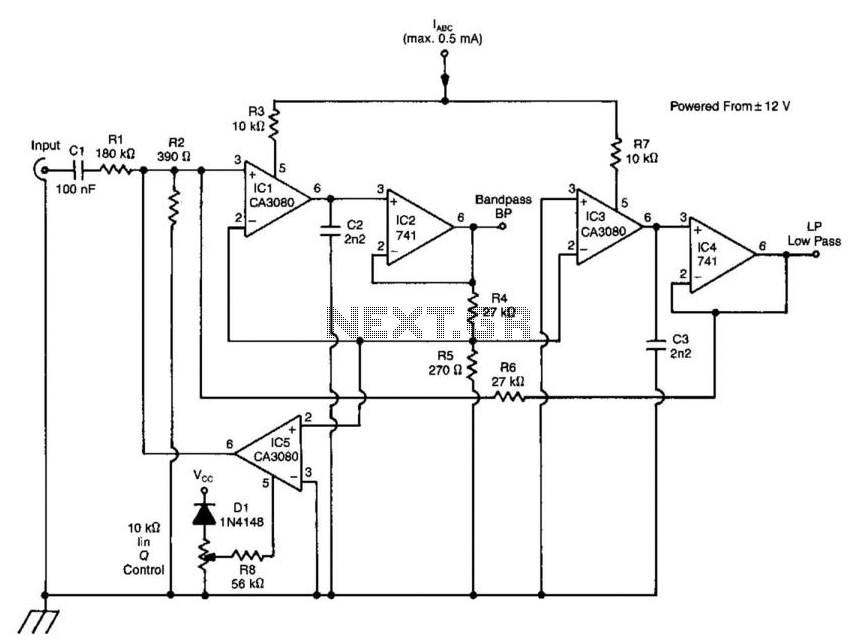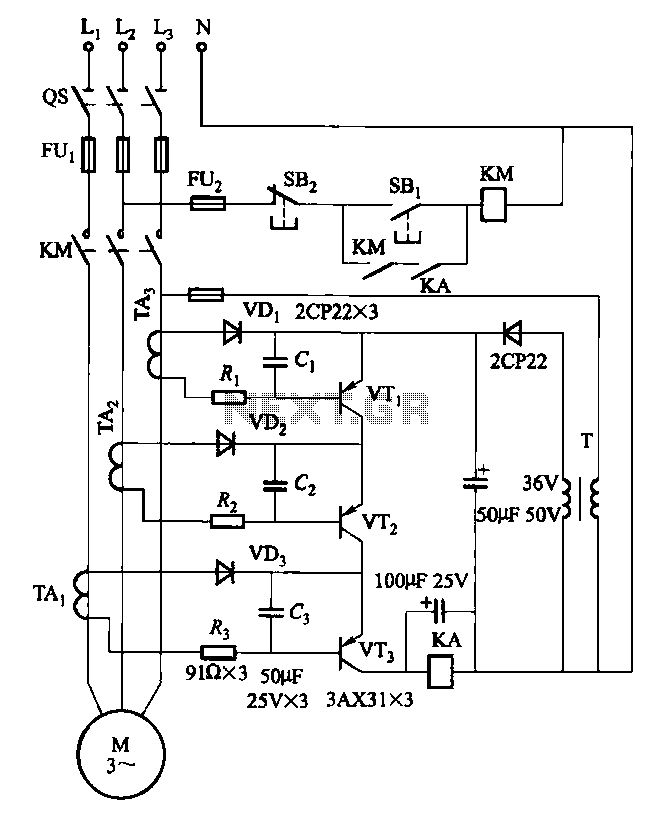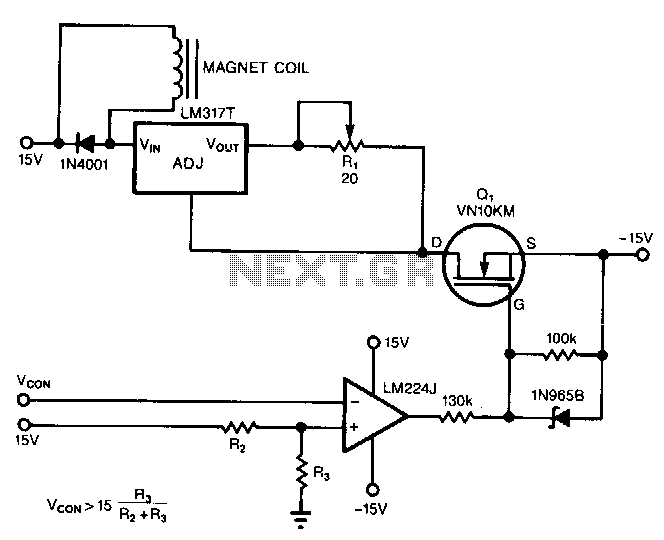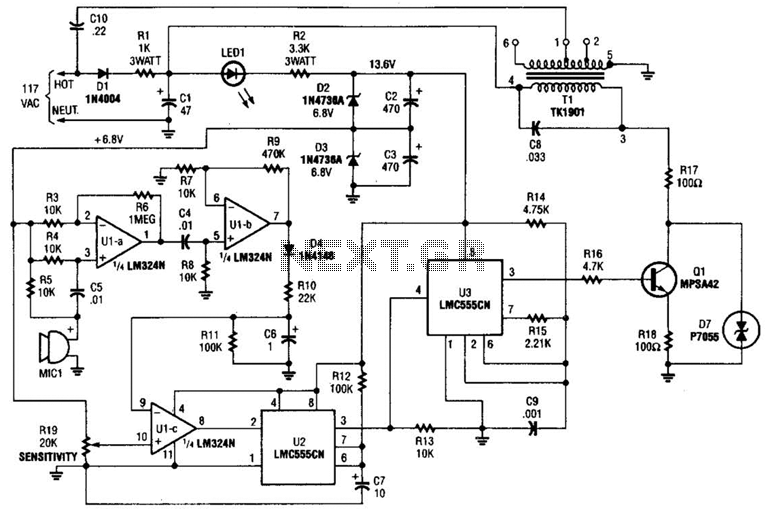
Voltage-Controlled Current Sink
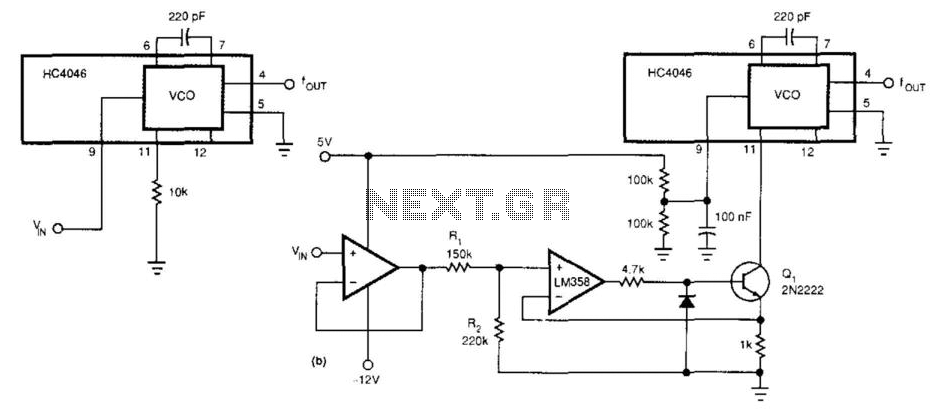
This circuit expands the linear frequency range of an HC4046 from one decade to nearly three decades. An LM358 is utilized as a constant-current sink, replacing the frequency-determining resistor (10 kΩ) connected from pin 9 to ground. For this application, pin 9 is maintained at a fixed voltage of 2.5 V.
The circuit utilizes the HC4046 phase-locked loop (PLL) integrated circuit, which is designed for frequency synthesis and demodulation applications. By employing the LM358 operational amplifier as a constant-current sink, the circuit achieves a broader frequency span. This is critical for applications requiring precise frequency control and stability.
The LM358 is configured to provide a constant current, effectively replacing the traditional resistor in the frequency-determining network. The choice of a 10 kΩ resistor is standard for setting the frequency range, but by using the LM358, the circuit can maintain a consistent current regardless of temperature variations or supply voltage changes. This enhances the performance of the PLL by ensuring that the frequency remains stable over a wider range.
Pin 9 of the HC4046 is crucial as it determines the reference voltage for the frequency control. By holding this pin at a fixed 2.5 V, the circuit can operate within a defined voltage range, which is essential for achieving the desired frequency characteristics. This fixed voltage also helps in minimizing the effects of noise and fluctuations, leading to improved reliability and accuracy in frequency generation.
Overall, this configuration allows for a significant increase in the operational frequency range of the HC4046, making it suitable for more complex applications in communications, signal processing, and other electronic systems that require precise frequency modulation and demodulation capabilities. This circuit widens the linear frequency span of an HC4046 from one decade to nearly three decades. An LM35 8 is used as a constant-current sink to replace the frequency-determining resistor (10 kfl) from pin 9 to ground. Pin 9 is held at a fixed 2.5 V for this application.
The circuit utilizes the HC4046 phase-locked loop (PLL) integrated circuit, which is designed for frequency synthesis and demodulation applications. By employing the LM358 operational amplifier as a constant-current sink, the circuit achieves a broader frequency span. This is critical for applications requiring precise frequency control and stability.
The LM358 is configured to provide a constant current, effectively replacing the traditional resistor in the frequency-determining network. The choice of a 10 kΩ resistor is standard for setting the frequency range, but by using the LM358, the circuit can maintain a consistent current regardless of temperature variations or supply voltage changes. This enhances the performance of the PLL by ensuring that the frequency remains stable over a wider range.
Pin 9 of the HC4046 is crucial as it determines the reference voltage for the frequency control. By holding this pin at a fixed 2.5 V, the circuit can operate within a defined voltage range, which is essential for achieving the desired frequency characteristics. This fixed voltage also helps in minimizing the effects of noise and fluctuations, leading to improved reliability and accuracy in frequency generation.
Overall, this configuration allows for a significant increase in the operational frequency range of the HC4046, making it suitable for more complex applications in communications, signal processing, and other electronic systems that require precise frequency modulation and demodulation capabilities. This circuit widens the linear frequency span of an HC4046 from one decade to nearly three decades. An LM35 8 is used as a constant-current sink to replace the frequency-determining resistor (10 kfl) from pin 9 to ground. Pin 9 is held at a fixed 2.5 V for this application.
